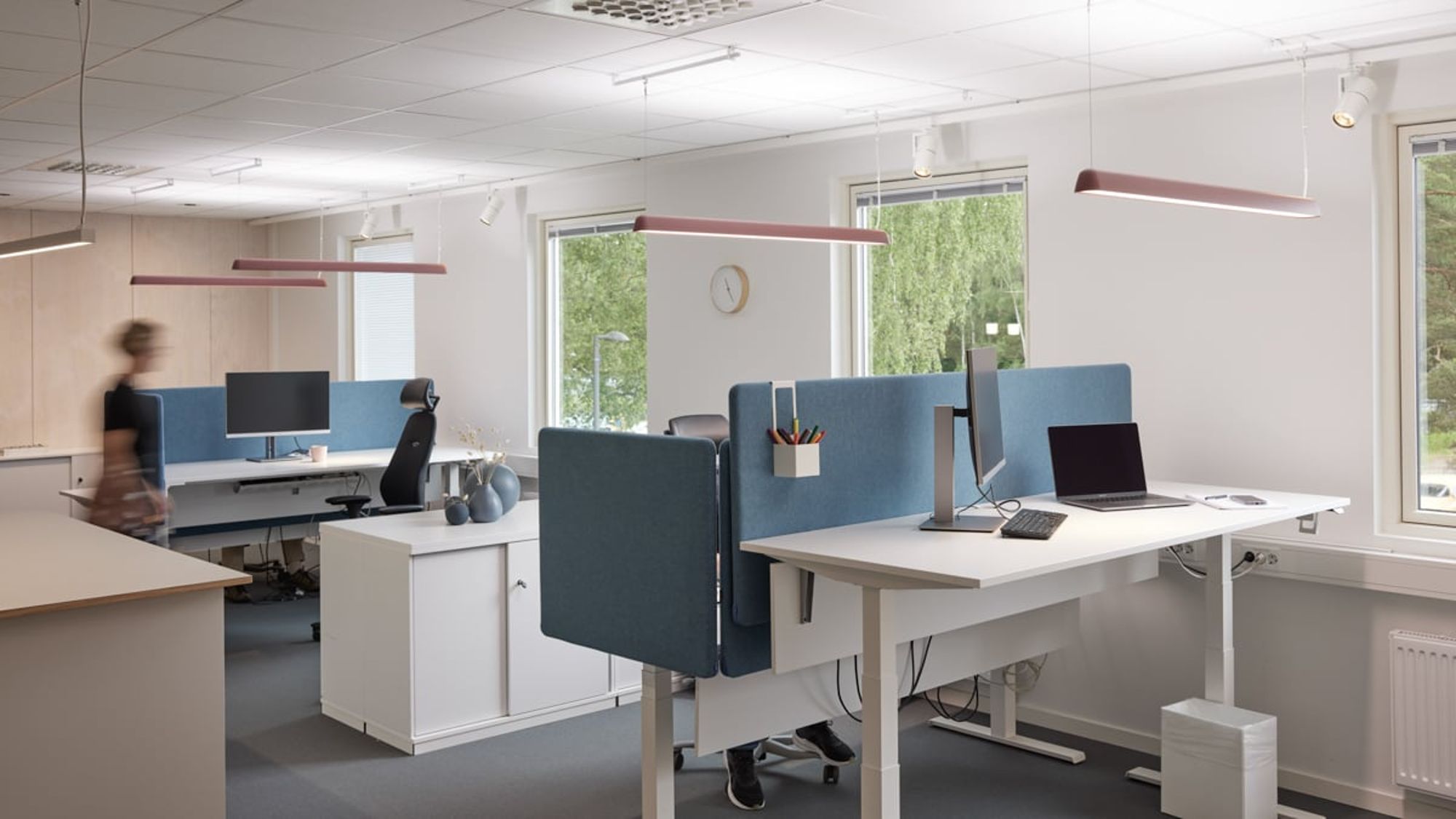Lighting of peripheral surrounding area
There are no defined requirements in Ljus & Rum for illuminance within the peripheral surrounding area, i.e. the area outside of the immediate surrounding area.

The area can be said to be bounded by the immediate surrounding area and a zone of maximum 0.5 meters from the room’s walls, or to a strip around the immediate surrounding area with a width of at least 3 m.Illuminance in the peripheral surrounding area must be at least one-third of the illuminance within the immediate surrounding area. The peripheral surrounding areas is always calculated at floor level. In the case of smaller rooms, a zone of 15% of the shortest dimension of the room may be excluded.
The illuminance variation, i.e. the difference between the lowest illuminance and the average illuminance of the peripheral surrounding area, must be as small as possible. Uniformity, i.e. the ratio between Emin/Eavg may not be less than 0.1.
For example, if the requirement for illuminance in the working area is 500 lx in a premises and 300 lx for the immediate surrounding area, the illuminance in the peripheral surrounding area shall not be less than 100 lx. The minimum illuminance shall be calculated within a zone outside the immediate surrounding area to maximum 0.5 m from the walls of the room (alternatively 15% of the room's shortest dimension for smaller rooms), or for a strip around the immediate surrounding area with a width of at least 3 m.
The lighting around the working area shall contribute towards good adaptation luminance in accordance with that set out in the section Luminance distribution and luminance limitations.
As a rule in premises where work is carried out with bright walls, the ratio between the illuminance within the working area and the average illuminance on the room walls within the normal range of vision should not exceed 3:1.